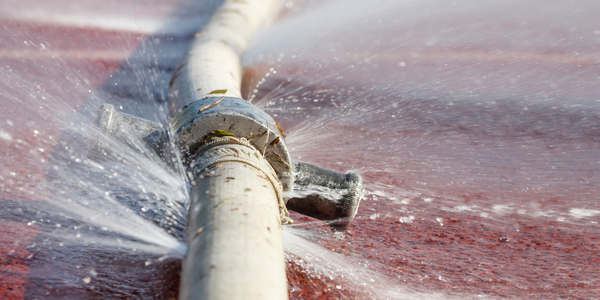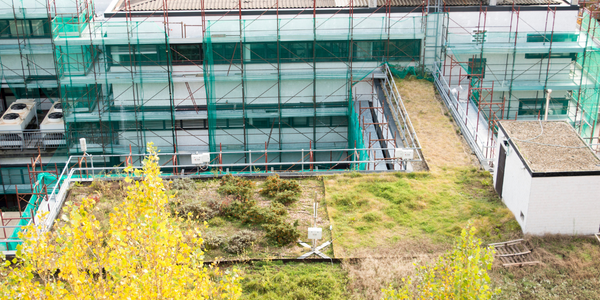ж∞іеК°зЃ°зРЖ

- иЃЊе§ЗдЄОжЬЇжҐ∞
- зЯњдЄЪ
- зїіжК§
- иі®йЗПдњЭиѓБ
йҐДиЃ°еИ∞ 2025 еєіпЉМж∞іиі®зЫСжµЛеЄВеЬЇдїЈеАЉе∞ЖиЊЊеИ∞ 46.9 дЇњзЊОеЕГпЉМ2016 еєіиЗ≥ 2025 еєійЧізЪДе§НеРИеєіеҐЮйХњзОЗдЄЇ 4.54%гАВ
ж∞іиі®еТМж≥ДжЉПзЫСжµЛзЪДеХЖдЄЪдїЈеАЉжШѓдїАдєИпЉЯ
- йАЪињЗиКВзЬБжИРжЬђиОЈеЊЧйҐЭе§ЦжФґеЕ•пЉЪйАЪињЗеЃЮжЧґзЫСжОІжЙАжЬЙжУНдљЬпЉИеМЕжЛђж≥ДжЉПгАБеОЛеКЫдЉ†жДЯеЩ®еТМзЙ©иБФзљСиљѓдїґеИЖжЮРпЉЙеПѓдї•йЩНдљОж∞ізЃ°зРЖжИРжЬђпЉМдїОиАМдЉШеМЦиµДдЇІеИ©зФ®зОЗгАБжФєињЫињРиР•жµБз®ЛгАБиКВзЬБиГљжЇРжИРжЬђгАБжЬАе§ІйЩРеЇ¶еЬ∞еЗПе∞СдЇЇеЈ•еє≤йҐДгАБжЫідљОзЪДзїіжК§жИРжЬђеТМжЫідљОзЪДеЯЇз°АиЃЊжЦљжИРжЬђ
- жПРйЂШзФЯдЇІеКЫпЉЪзЙ©иБФзљСеЕБиЃЄеЃЮжЧґжОІеИґжЫіжШОжЩЇзЪДдЄЪеК°еЖ≥з≠ЦгАБйЩНдљОињРиР•жИРжЬђгАБдЉШеМЦжµБз®ЛеТМиµДжЇРдї•еПКзЉ©зЯ≠жЬНеК°жЧґйЧі
- жПРйЂШжХИзОЗпЉЪж∞ізЃ°зРЖеЕђеПЄеТМеНПдЉЪеПѓдї•дљњзФ®еЃЮжЧґињРиР•жОІеИґжЭ•еБЪеЗЇжЫіжШОжЩЇзЪДдЄЪеК°еЖ≥з≠ЦеєґйЩНдљОињРиР•жИРжЬђ
- жФєињЫзЪДжУНдљЬињЗз®ЛжОІеИґеТМзЫСжОІ
- дЉШеМЦеТМйАПжШОзЪДиµДдЇІеИ©зФ®пЉЪжЩЇиГљзФµи°®гАБдЉ†жДЯеЩ®еТМињЮжО•жШЊзЭАжФєеЦДжЙАжЬЙиµДдЇІзЪДиЈЯиЄ™пЉМжПРдЊЫеѓєдЊЫеЇФйУЊзЪДеЃЮжЧґеПѓиІБжАІ
- дЉШеМЦеТМйАПжШОзЪДиµДдЇІеИ©зФ®пЉЪйАЪињЗдљњзФ®дЉ†жДЯеЩ®еТМињЮжО•пЉМж∞іеК°еЕђеПЄжШЊзЭАжФєеЦДдЇЖеѓєеЕґжЙАжЬЙиµДдЇІзЪДиЈЯиЄ™пЉМиОЈеЊЧеѓєеЕґдЊЫеЇФйУЊзЪДеЃЮжЧґеПѓиІБжАІ
- зФ®ж∞ізїЯиЃ°еТМеИЖжЮРзЪДеЃЮжЧґзЯ•иѓЖпЉМдї•еЃЮзО∞жЫіжЩЇиГљгАБжЫіењЂйАЯзЪДеЖ≥з≠ЦпЉЪзЙ©иБФзљСеИЖжЮРеПѓдї•жґИйЩ§жХ∞жНЃдЄНиІДеИЩжАІпЉМеєґжПРдЊЫжЬ™иЃ°иієзФ®ж∞ізїЯиЃ°жХ∞жНЃжИЦеЖ≥з≠ЦињЗз®ЛдЄ≠жЙАйЬАзЪДдїїдљХзЫЄеЕ≥зїЯиЃ°жХ∞жНЃзЪДеЃЮжЧґиІЖеЫЊгАВ
- йЩНдљОзїіжК§жИРжЬђпЉМеРМжЧґжПРйЂШзљСзїЬињРиР•зЪДеЃЙеЕ®жАІеТМеПѓйЭ†жАІпЉЪиГље§ЯеЃЪдљНжЙАжЬЙиµДдЇІпЉМињЫи°МеЃЮжЧґзЫСжОІпЉМжОІеИґеТМињРи°МеЕ≥йФЃеЯЇз°АиЃЊжЦљеТМжЬЇеЩ®зЪДйҐДйШ≤жАІзїіжК§пЉМж∞іеК°еЕђеПЄжШЊзЭАйЩНдљОзїіжК§жИРжЬђеєґжЬАе§ІйЩРеЇ¶еЬ∞еЗПе∞СеУНеЇФжЧґйЧігАВ
дЄЇдїАдєИж∞ізЃ°зРЖз≥їзїЯдЄ≠зЪДеЃЮжЧґжХ∞жНЃеИЖжЮРеЊИйЗНи¶БпЉЯ
еЯЇдЇОзЙ©иБФзљСзЪДж∞ізЃ°зРЖз≥їзїЯеИ©зФ®еЃЮжЧґжХ∞жНЃеИЖжЮРзЪДеКЫйЗПжЭ•пЉЪ
- жЬЙжХИеЬ∞еУНеЇФеТМйБњеЕНзіІжА•жГЕеЖµ
- йЗНжЦ∞иОЈеЊЧжФґеЕ•
- йЩНдљОиГљжЇРжИРжЬђ
- еЗПе∞СзіІжА•зїідњЃжГЕеЖµ
-ж£АжµЛеТМзЃ°зРЖж∞іеИЖжµБ姱
- йҐДжµЛжљЬеЬ®зЪДзЃ°йБУжХЕйЪЬ
- зЃ°зРЖж∞іеОЛ
- жЫіе•љеЬ∞еИЖйЕНзїіжК§еТМзїідњЃжИРжЬђ
ж°ИдЊЛз†Фз©ґ.








